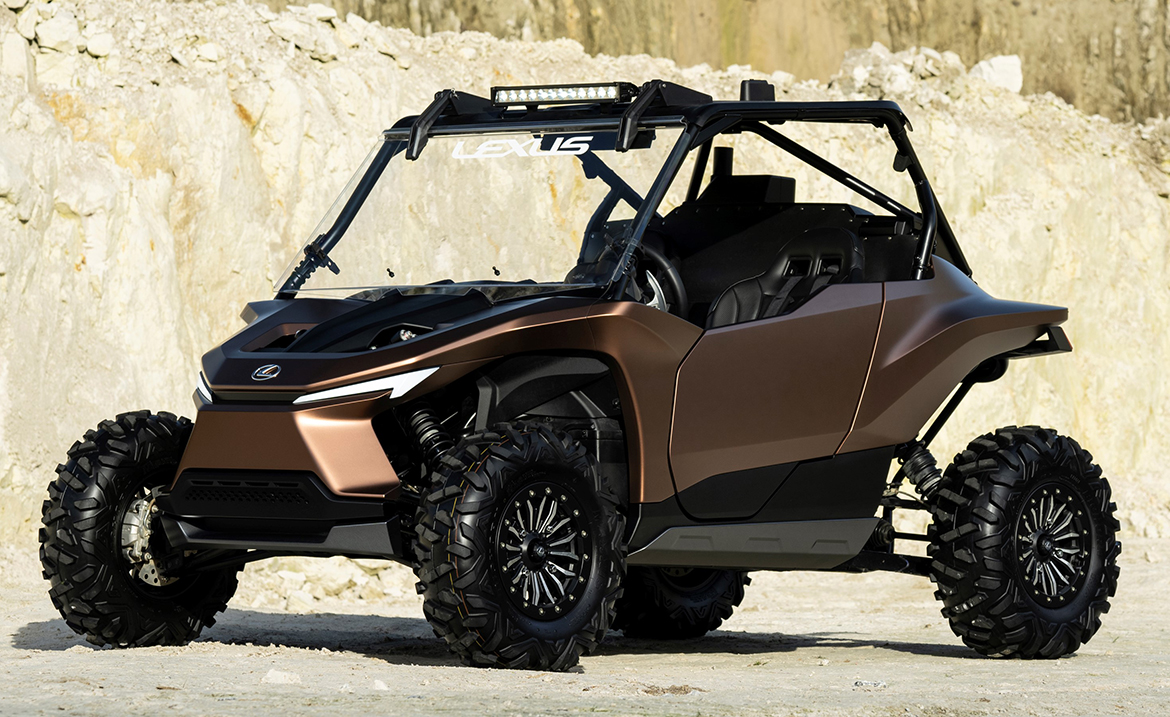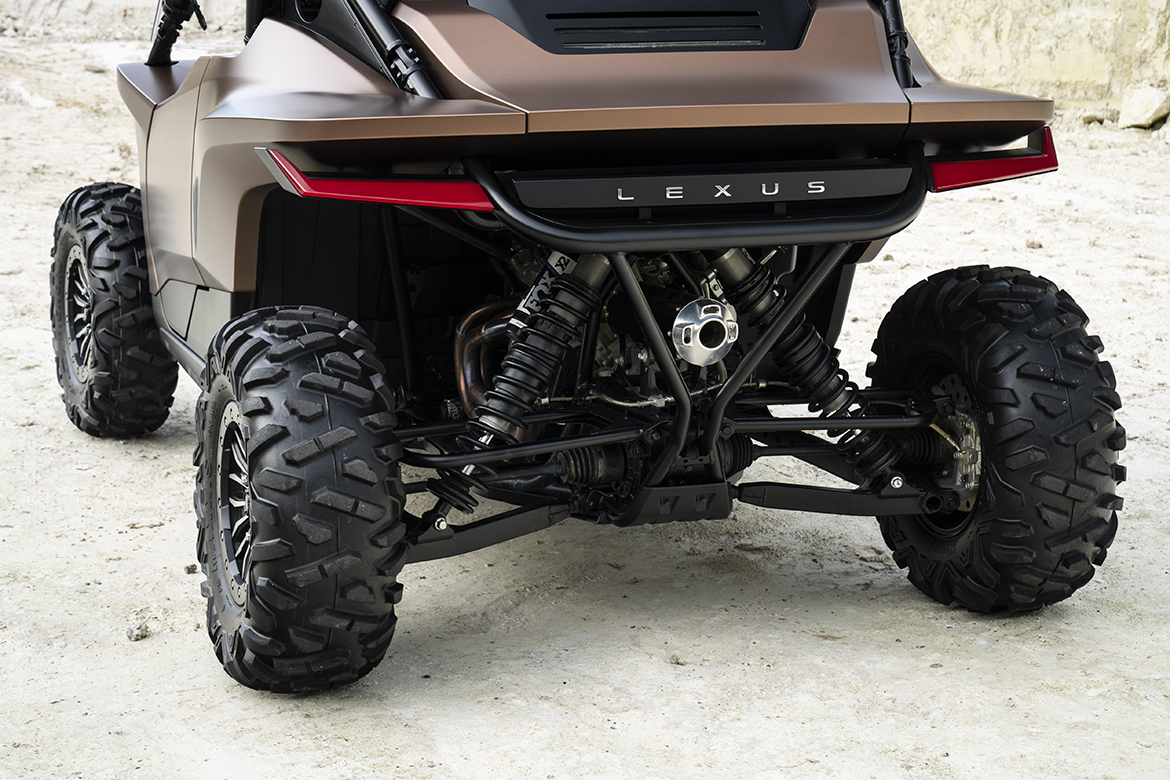You wouldn’t expect a vehicle like the ROV from Lexus. In recent years Lexus design has shown its eclecticism with projects that go beyond the purely automotive context, and are extremely diverse, from the Lexus LY 650 luxury yacht to the sci-fi Skyjet designed for the film “Valerian and the City of a Thousand Planets”, to the Lexus Hoverboard, the magnetic levitation skateboard.
The ROV (Recreational Off-road Vehicle) unveiled in Brussels during the Toyota Kenshiki Forum is a four-wheeled vehicle and the comparison with the Lexus range, where it is unmatched, comes naturally. What is new for the brand, however, is first and foremost its hydrogen propulsion, hence the decision to design a vehicle capable of offering a luxury lifestyle experience even when driving off-road, but in a responsible manner and without carbon emissions.
The ROV follows the Omotenashi philosophy at the heart of Lexus design: in the spirit of Japanese hospitality, it surprises people by anticipating their needs and paying attention to every detail. For the Lexus ROV concept, the design team developed a vehicle that would do well in all kinds of natural environments. The concept has all the characteristics of a true off-road vehicle, with visible suspension, a protective cage and generous tyres specifically for driving on muddy roads in a extremely compact body: 3.1 metres long, 1.7 metres wide and 1.8 metres high.
Engineers designed a body that could protect passengers, incorporate the iconic Lexus signature grille and still retain enough travel for the front suspension. In addition, the front wings were designed to offer protection against any stones thrown up while driving or mud. The suspension cover, which is connected to the rear hydrogen tank, protects the functional parts as well as conveying a sense of robustness common to all Lexus SUVs.














